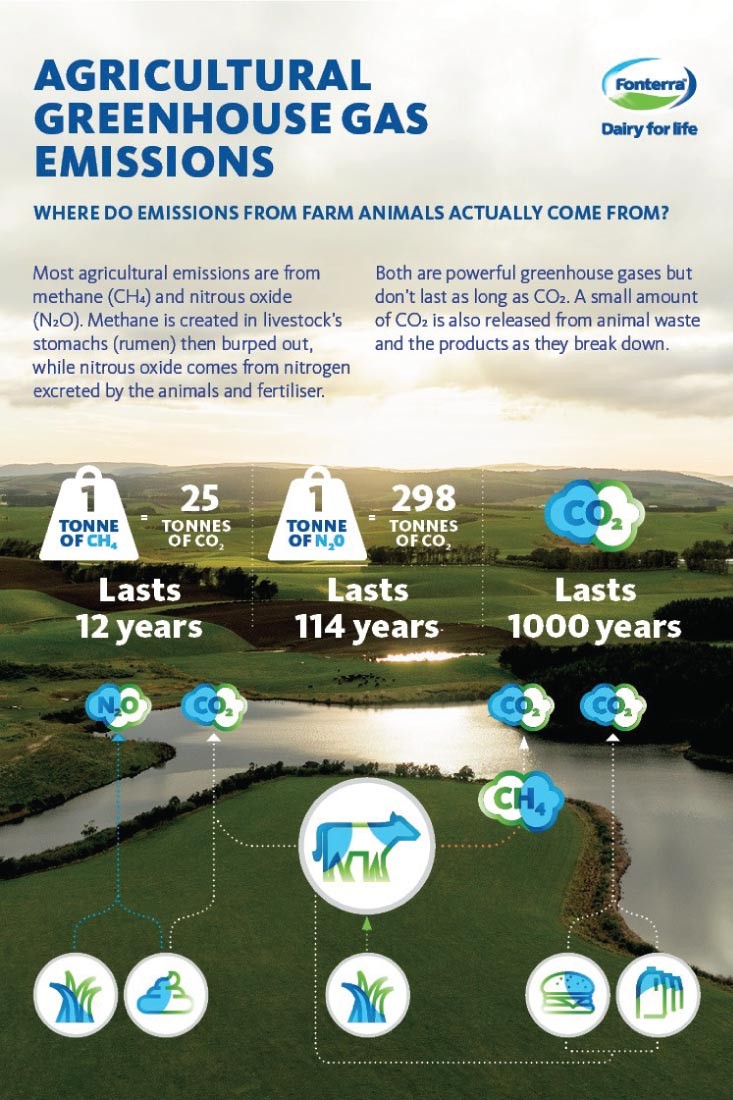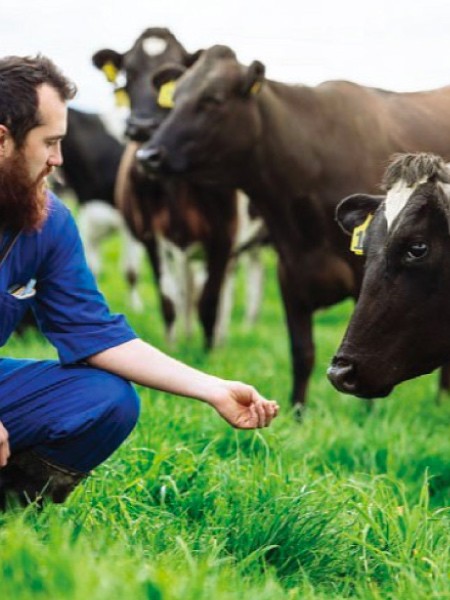What role does agriculture play in climate change?
For many, agriculture and its emissions are an easy target in the debate about how the country can meet its obligations to the Paris Agreement.
Agriculture is New Zealand’s biggest emitter but it’s important to separate fact from fiction in understanding the role livestock play and what can be done about it to help the country reach its goals.
Around 49 per cent of the country’s Greenhouse gases (GHG’s) come from agriculture, with the rest made up like this:
- 40 per cent from energy and transport (e.g. cars, trucks and power generation)
- 6 per cent from industrial processes (e.g. manufacturing)
- 5 per cent from waste (e.g. treatment and disposal)
Most agricultural emissions come from the animals. About 23 per cent for sheep and beef and nearly 25 per cent for dairy.

Methane burps
Methane burps are created through the process of enteric fermentation. First, the food sheep and cows eat goes into a chamber called a rumen. There, up to 200 different organisms (like fungi and bacteria) get to work processing, breaking down and fermenting the food. This gives the animal a bit of energy before being passed along to the next stomach for more processing. As the plants and grasses are fermented in the rumen, methane is created, which the animal then burps out.
Methane is a powerful GHG that is nearly 34 times better at trapping heat than carbon dioxide (or CO2). But while carbon dioxide can take thousands of years to break down, methane only remains in the atmosphere for about 12 years.
Nitrous oxide is also a potent GHG, about 298 times better at trapping heat than carbon dioxide. It’s created from nitrogen on the ground – 20 per cent from fertiliser and 80 per cent from livestock’s urine and dung. But it also doesn’t last as long as CO2, breaking down within 114 years.
Livestock’s role in mitigating climate change
While reductions in methane emissions do need to be made, there is a good case for it to be considered differently to carbon dioxide because it doesn’t last as long in the atmosphere.
Read: Not all gases created equal
The other part of the equation is balancing agriculture’s role in the global economy and as an affordable source of food to combat malnutrition and poverty across the world.
According to the United Nations Food and Agriculture Organisation, it contributes to the livelihoods of around 1.7 billion people and creates jobs in related sectors, such as transport, feed, vet services, and trade. Due to its typically low capital needs, farming livestock provides more opportunities in under-employed sectors and plays an important role for 60 per cent of rural households in developing countries.

Balancing this important role in the global food system and economy against lowering emissions is already happening with many farmers, including here. This ranges from managing the type of feed given to animals, the amount of fertiliser used, avoiding over-grazing and innovative research into methane reducing feeds for cows and selective breeding programmes. All clear indications that agriculture is committed to playing its part in helping New Zealand meet its obligations to the Paris Agreement.

